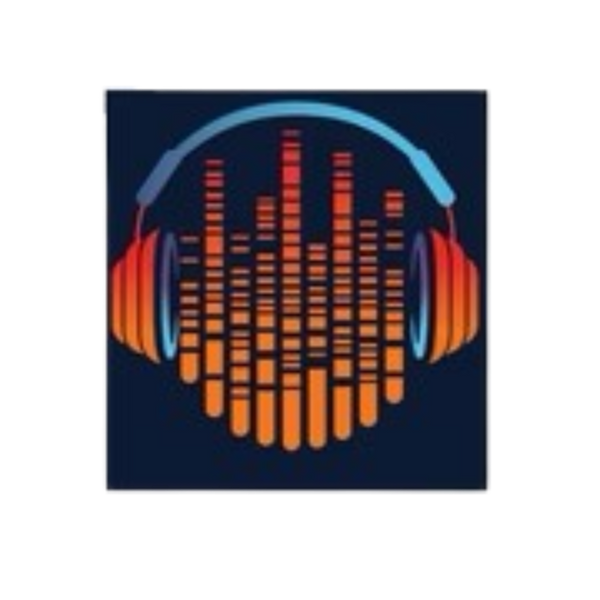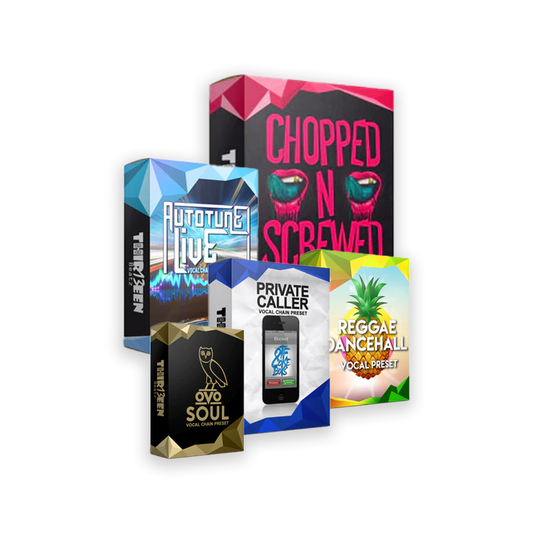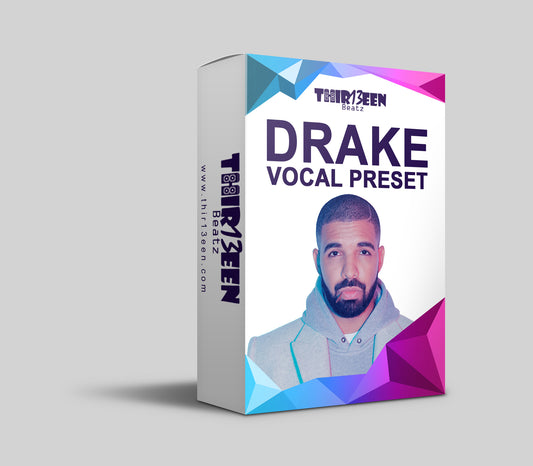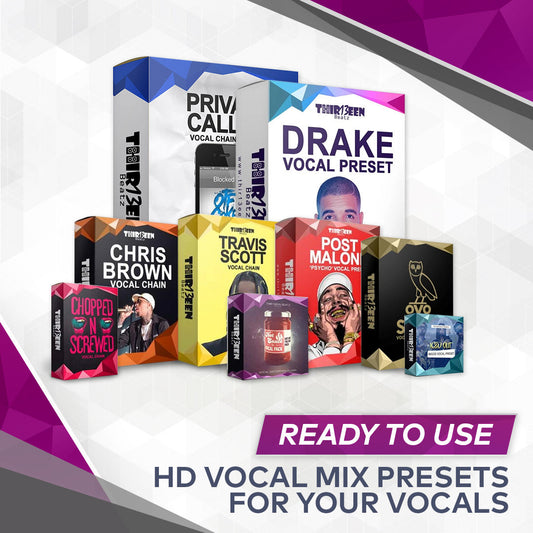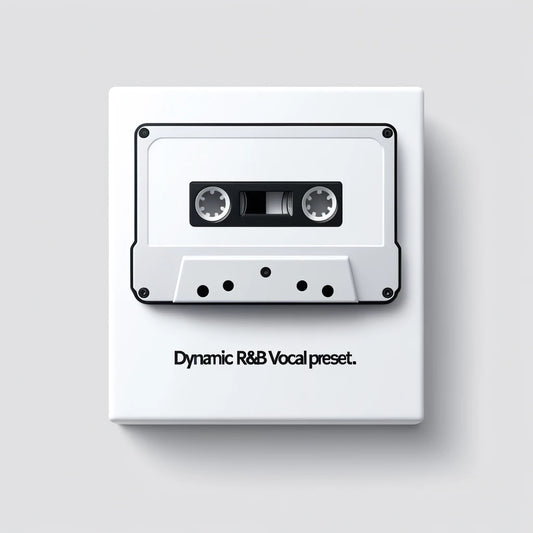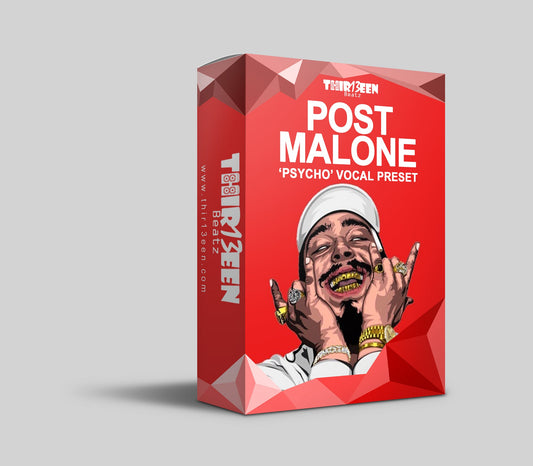Intro to the Best Mic for Recording Vocals
The AKG C414 is a multi-pattern condenser microphone cherished for its versatility and detailed sound reproduction. A staple in studios around the globe, the C414 excels in capturing everything from vocals to a wide array of instruments, making it a go-to microphone for many audio engineers and producers.
Key Features:
- Multiple Pickup Patterns: Offers nine selectable polar patterns, allowing for great recording flexibility in various acoustic environments.
- Overload Warning Indicator: Features a pre-attenuation pad and overload warning indicator, ensuring optimal signal integrity without distortion.
- High Sensitivity: Captures subtle nuances with its high sensitivity and wide frequency response, delivering a detailed and natural sound.
Pros:
- Exceptional versatility with nine polar patterns for various recording scenarios.
- High-quality sound reproduction, capturing a wide dynamic range with clarity.
- Robust build quality, ensuring durability for studio and live use.
Cons:
- Premium pricing, reflecting its professional studio quality and versatility.
- Can be overwhelming for beginners due to its extensive features and settings.
In summary, the AKG C414 stands out as a versatile and detailed condenser microphone, ideal for capturing a wide range of vocals and instruments. Its multiple pickup patterns and high sensitivity make it a powerful tool for achieving professional-grade recordings. While its price may be on the higher side, the investment is justified by its unparalleled flexibility and sound quality, making it a valuable asset in any recording environment.
3. Shure SM7B Vocal Recording Microphone (Best Value)
The Shure SM7B is a dynamic microphone that has become a staple in both broadcast and recording studios for its warm, smooth sound and its exceptional ability to handle high sound pressure levels (SPLs). Celebrated for its reliability and performance, the SM7B is favored by vocalists, podcasters, and audio engineers alike for a range of applications from professional music recording to voice-overs.
Key Features:
- Flat, Wide-Range Frequency Response: Provides exceptionally clean and natural reproduction of both music and speech.
- Improved Rejection of Electromagnetic Hum: Ensures protection against the buzz of computer monitors and other studio equipment.
- Air Suspension Shock Isolation and Pop Filter: Minimizes mechanical noise transmission and breathiness in vocal recordings.
Pros:
- Renowned for producing a warm, smooth sound, enhancing vocal recordings.
- Capable of handling extremely high SPLs, making it versatile for various recording settings.
- Features like the internal air suspension shock isolation and built-in pop filter significantly reduce background noise and plosives.
Cons:
- Requires a substantial amount of gain, which may necessitate a high-quality preamp or an inline gain booster.
- The microphone's weight and size demand a sturdy stand or boom arm for proper positioning.
In conclusion, the Shure SM7B's reputation as a go-to microphone for recording vocals is well-earned, thanks to its warm sound profile, ability to handle high SPLs, and built-in features that combat background noise and electromagnetic interference. While its need for additional gain and robust support might present minor challenges, the SM7B remains a top choice for anyone looking to achieve professional-grade audio quality in their recordings.
The Best USB Microphone for Vocals
1. Blue Yeti USB Microphone for Vocals
The Blue Yeti is a USB microphone that stands out for its exceptional versatility and ease of use, making it a favorite among podcasters, streamers, and home recording enthusiasts. With its tri-capsule technology and multiple pattern selection, the Yeti offers studio-quality recording capabilities without the need for an external sound card or audio interface.
Key Features:
- Tri-Capsule Array: Allows for recording in stereo or three distinct patterns (cardioid, omnidirectional, and bidirectional), catering to various recording situations.
- Plug-and-Play: Compatible with both Mac and PC, the Yeti requires no additional drivers, enabling easy setup and use.
- Onboard Audio Controls: Features include microphone gain, mute button, and zero-latency headphone output for real-time monitoring.
Pros:
- Versatile recording patterns make it suitable for everything from solo podcasts to group interviews.
- High-quality audio capture with minimal setup, ideal for beginners and pros alike.
- Durable construction and aesthetic design that fits well in any studio setup.
Cons:
- Its size and weight may limit portability for those on the move.
- Can pick up background noise if not used in a controlled environment, requiring careful placement and possibly additional sound treatment.
In summary, the Blue Yeti USB microphone is a standout choice for those seeking a combination of quality, versatility, and ease of use. While its size may pose a challenge for mobile recording setups, its performance and feature set make it a valuable tool for anyone looking to produce professional-grade audio from the comfort of their home or studio.
Also Read: Best DAW for Recording Vocals
2. The Audio-Technica AT2020USB+ USB Vocal Recording Mic
The Audio-Technica AT2020USB+ is a highly regarded USB microphone that combines Audio-Technica's renowned sound quality with the convenience of USB connectivity. Designed to offer studio-grade recordings directly to your computer, the AT2020USB+ is a go-to for musicians, podcasters, and voice-over artists seeking clear, professional audio.
Key Features:
- High-Quality A/D Converter: Ensures pristine sound quality with a 16 bit, 44.1/48 kHz sampling rate for superb audio.
- Mix Control: Allows users to blend their microphone signal with pre-recorded audio, perfect for podcasting or adding narration to videos.
- Headphone Jack with Volume Control: Offers zero-latency monitoring, so you can hear yourself in real-time without any delay.
Pros:
- Exceptional sound clarity, capturing vocals and instruments with precision.
- Easy to set up and use, making it ideal for both beginners and seasoned professionals.
- Durable build quality that promises longevity even with regular use.
Cons:
- Limited versatility in recording patterns compared to some competitors.
- Some users might find the need for additional accessories for optimal positioning and sound treatment.
In conclusion, the Audio-Technica AT2020USB+ stands out for its excellent sound quality, ease of use, and thoughtful features like mix control and real-time monitoring. While it may not offer the pattern versatility of multi-pattern mics, its performance in capturing clear and detailed sound makes it a top choice for anyone looking to produce high-quality audio recordings with minimal fuss.
3. Rode NT-USB Vocal Microphone with USB
The Rode NT-USB is a versatile, studio-quality USB microphone designed for recording singing, musical performances, and spoken word directly to a computer. Its plug-and-play design, combined with Rode's reputation for durability and audio quality, makes it a favorite among content creators and musicians looking for high-quality recordings without the need for an audio interface.
Key Features:
- Zero-Latency Monitoring: Includes a built-in headphone jack for direct monitoring of microphone input without delay, ensuring perfect performances and recordings.
- On-Mic Mix Control: Allows users to adjust the balance between direct microphone input and source output for optimal sound.
- Premium Pop Filter: Comes with a high-quality pop shield, reducing plosives for clearer audio capture, especially important for vocal performances.
Pros:
- Excellent sound quality with clear, detailed capture of vocals and instruments.
- Easy setup and use, ideal for both novice and professional users.
- The included pop filter and stand enhance recording quality and stability.
Cons:
- Some users may prefer more recording pattern options for versatility.
- The price point might be higher compared to other USB microphones, reflecting its premium features.
In summary, the Rode NT-USB stands out for its exceptional recording quality, user-friendly features, and comprehensive package, including a pop filter and desk stand. While it may come at a premium price, its performance and durability justify the investment for serious content creators and musicians seeking reliable, high-quality audio recording capabilities.
Selecting the Best Microphone Stand for Stability and Flexibility
1. K&M 210/9 Microphone Stand
The K&M 210/9 microphone stand combines robust construction with versatile positioning to support vocal performances in studios and live settings. Recognized for its stability and flexibility, this stand is a go-to for professionals who demand reliability during recording sessions or performances.
Key Features:
- Telescopic Boom Arm: Offers adjustable length and angle, allowing for precise mic placement in complex setups.
- Solid Metal Construction: Ensures durability and stability, preventing tipping during use.
- Easy Height Adjustment: Features a smooth, reliable clutch mechanism for quick height changes without sacrificing stability.
Pros:
- Exceptional build quality that withstands rigorous use in any recording or performance environment.
- Versatile boom arm adjustment for optimal microphone positioning.
- Dependable stability reduces the risk of equipment damage.
Cons:
- The high-quality construction comes at a premium price compared to other stands.
- Heavier than some alternatives, which might affect portability for gigging musicians.
In summary, the K&M 210/9 microphone stand is an excellent investment for those seeking a reliable, flexible solution for microphone placement. Its superior build quality and adjustability features make it a preferred choice among professionals, ensuring that microphones remain secure and precisely positioned for the best sound capture. While the price and weight may be considerations for some, the performance and durability it offers are unmatched.
2. The On-Stage Stands MS7701B Mic Stand
The On-Stage Stands MS7701B merges durability with affordability, presenting an ideal choice for musicians and podcasters who need a reliable microphone stand without breaking the bank. This stand is celebrated for its robust construction, adaptability, and ease of use, making it a staple in both home studios and live performance settings.
